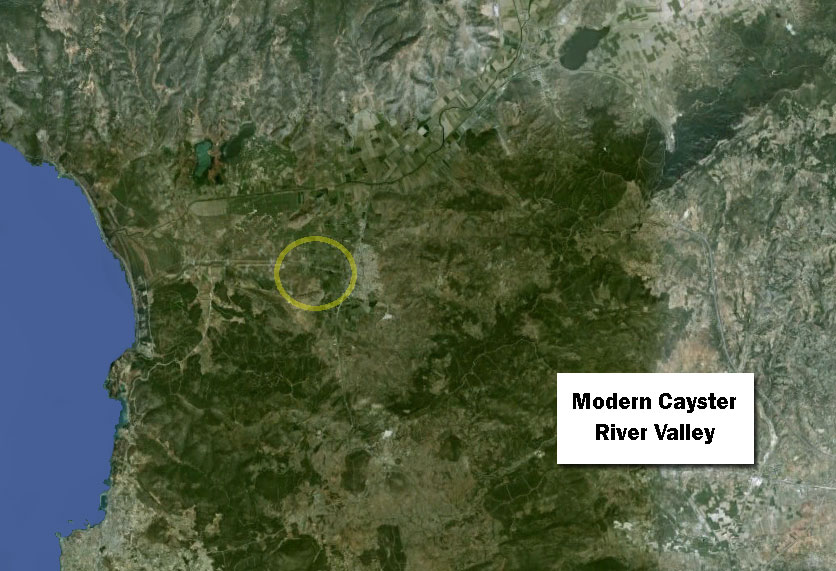
600 B.C.E. 300 B.C.E. 1st C. B.C.E. 1st C. C.E. 3rd C. C.E. Today
The Bay of Ephesus is gone forever: Modern times
Now, the silting process is complete, having completely filled in the Bay of Ephesus. When it became clear that the expense of dredging the harbor outweighed its benefits, the former glory of Ephesus, once the fourth largest city in the Roman world, faded away. Today, tourists walk down Harbor Street, scratching their heads as they look for a harbor that isn’t there.
Want to dive deeper?
John C. Kraft, Helmut Brückner, Ilhan Kayan, and Helmut Engelmann. “The Geographies of Ancient Ephesus and the Artemision in Anatolia,” Geoarchaeology: An International Journal, Vol. 22, No. 1 (1997): 121–149. Cited January 17, 2017.
A team of scientists made an extensive series of bore-holes around the Ephesus area and analyzed the resulting core samples. They determined dates when the tested area was under water and compiled maps showing the shoreline at given dates in ancient times. My maps are based on this research, primarily the maps on pp. 127, 130, 142, and 143, as well as Figure 1 from the following article.
Hugo Delile, Janne Blichert-Toft, Jean-Philippe Goiran, Friederike Stock, Florent Arnaud-Godet, Jean-Paul Bravard, Helmut Brückner, and Francis Albarède. “Demise of a harbor: A geochemical chronicle from Ephesus,” Journal of Archaeological Science, 53 (2015): 202-213. Figure 1.
